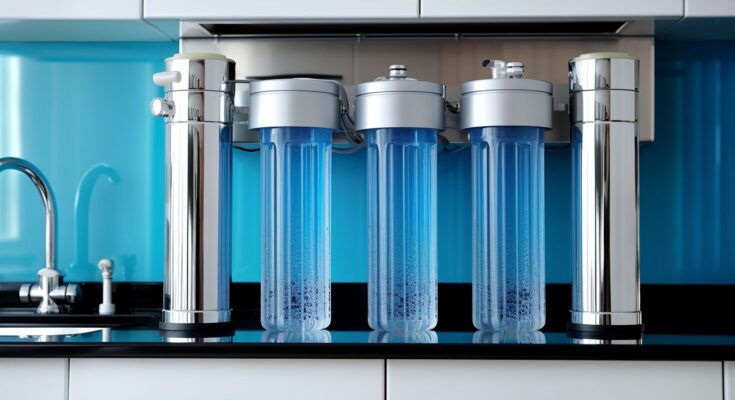10 Things to Know Before Buying a Water Purifier in Malaysia
Water is essential for life, but not all water is safe for consumption. In Malaysia, where water quality varies significantly depending on the region, a water purifier is no longer a luxury—it’s a necessity. With countless options on the market, choosing the right water purifier can feel overwhelming. Here’s a detailed guide to help you make an informed decision.
1. Understand the Quality of Water in Malaysia
Water quality in Malaysia differs depending on the source and location. Many homes rely on municipal water, while others use well water or mixed sources. Common issues include sediment, chlorine, bacteria, and even heavy metals.
To make the right choice, test your water to identify specific contaminants. Understanding your water quality will help you select a purifier tailored to your needs.
Common Contaminants in Malaysia
- Chlorine: Frequently added to municipal water for disinfection but can affect taste and odor.
- Sediments: Dirt, rust, and sand often seep into the water supply due to aging pipes.
- Heavy Metals: Areas near industrial zones may experience contamination from lead, arsenic, or mercury.
2. Types of Water Purifiers Available in Malaysia
Choosing the right technology is crucial. Different water purifiers are designed to target specific contaminants.
Reverse Osmosis (RO) Systems
RO purifiers are highly effective in removing heavy metals, dissolved salts, and high Total Dissolved Solids (TDS). This makes them ideal for regions with hard water or water with industrial contaminants.
Ultraviolet (UV) Purifiers
UV purifiers use ultraviolet light to kill bacteria, viruses, and other microorganisms. They’re perfect for municipal water supplies with microbiological impurities but don’t remove dissolved solids or chemicals.
Activated Carbon Filters
These filters are excellent for removing chlorine, odors, and organic impurities. They’re often used in combination with other purification technologies.
Ultrafiltration (UF) Purifiers
UF purifiers use membranes to block bacteria and larger particles without requiring electricity. They’re suitable for low TDS water but cannot handle heavy metals.
3. Consider Local Water Hardness Levels
Malaysia’s water quality also varies in terms of hardness. Regions like Selangor and Johor may have harder water due to mineral content. If you’re dealing with hard water, an RO purifier is your best option, as it effectively removes excess calcium and magnesium.
4. Budget Wisely for Initial and Maintenance Costs
While the initial cost of a water purifier is important, don’t overlook ongoing maintenance expenses.
Initial Costs
In Malaysia, basic purifiers start at RM 500, while premium models with advanced features can go up to RM 3,000. Choose one that fits your budget but doesn’t compromise on essential features.
Maintenance Costs
Most purifiers require regular filter replacements, with costs ranging from RM 100 to RM 300 annually. Factor in these expenses to avoid unpleasant surprises later.
5. Choose the Right Storage Capacity
The size of your household determines the ideal storage capacity of your purifier.
- Small Households (1–3 people): A purifier with a 5–7 liter capacity is sufficient.
- Larger Families (4+ people): Opt for purifiers with a storage capacity of 10 liters or more.
6. Look for Certifications and Standards
Certifications are a guarantee of quality and safety. When shopping for a purifier in Malaysia, check for the following:
- NSF/ANSI: International standard for safety and performance.
- SIRIM: Malaysia’s certification for compliance with local quality standards.
These certifications ensure the purifier meets strict safety and efficiency requirements.
7. Prioritize Ease of Maintenance
A user-friendly purifier saves time and effort. Look for models with:
- Easy-to-replace filters: Reduces maintenance hassle.
- Smart alerts: Notify you when it’s time for a filter change or servicing.
8. Account for Installation Requirements
Before purchasing a purifier, consider your home’s setup:
- Plumbing: Some purifiers, like RO systems, require direct plumbing connections.
- Space: Ensure there’s enough room for installation, especially for wall-mounted units.
- Power Supply: Many purifiers, such as UV and RO models, need electricity to function.
9. Research Brand Reputation and Customer Reviews
In Malaysia, popular brands like Coway, Cuckoo, and Panasonic dominate the market for their quality and reliable service. Reading customer reviews online can give you valuable insights into real-world performance, durability, and customer support.
10. Check Warranty and Customer Support
A good warranty reflects the manufacturer’s confidence in their product. Most water purifiers in Malaysia come with a 1–3 year warranty. Also, ensure the brand has accessible customer support and service centers in your area to address any issues promptly.
Conclusion
Choosing the right water purifier in Malaysia may seem like a daunting task, but it doesn’t have to be. By understanding your water quality, selecting the right technology, and considering factors like budget, storage capacity, and certifications, you can find the perfect purifier for your home. Remember, clean water is an investment in your health, and a good purifier ensures peace of mind for years to come.
FAQs
1. What type of purifier is best for Malaysian households?
For municipal water, a UV purifier with an activated carbon filter is ideal. For hard water or industrial areas, opt for an RO system.
2. How often should I change the filters?
Filters typically need replacement every 6–12 months, depending on water quality and usage.
3. Can I install a water purifier on my own?
Some purifiers are DIY-friendly, but professional installation is recommended for complex systems like RO.
4. Do water purifiers remove essential minerals?
RO systems remove both harmful contaminants and essential minerals. Some models include a TDS controller to retain beneficial minerals.
5. Are water purifiers energy-efficient?
Gravity-based and UF purifiers don’t use electricity, while most modern RO and UV purifiers are designed to consume minimal power.



